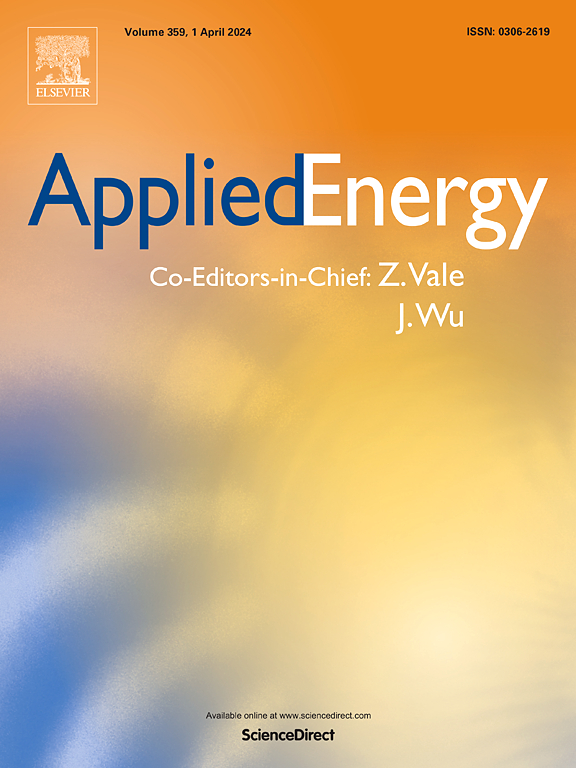Privacy-protected P2P electricity and carbon emission trading markets based on distributionally robust proximal atomic coordination algorithm
IF 10.1
1区 工程技术
Q1 ENERGY & FUELS
引用次数: 0
Abstract
As global power systems modernize towards intelligent infrastructures, peer-to-peer (P2P) energy trading is increasingly adopted worldwide as an innovative electricity market mechanism. This paper explores the decision-making behaviors of diverse agents, market mechanisms, and privacy protections in fully decentralized P2P electricity and carbon emission trading (CET), accounting for uncertainties from renewable energy sources. A novel P2P energy trading mechanism is proposed based on asymmetric Nash bargaining theory. The P2P electricity and carbon market models are decomposed into a cooperative alliance operation problem and an asymmetric cost distribution problem. Additionally, a contribution factor calculation method is introduced, considering both P2P electricity trading and CET marginal effect contribution. To manage renewable energy output uncertainties, a distributionally robust model using Kullback–Leibler (KL) divergence is reformulated as a chance-constrained problem. A proximal atomic coordination (PAC) algorithm is implemented to enhance privacy protection within a fully decentralized framework. Case studies demonstrate that P2P energy trading can reduce total costs by 10.29% and carbon quotas by 11.86% for cooperative alliances. Furthermore, the PAC algorithm decreases total computational time by 12.65% compared to the ADMM algorithm, highlighting its effectiveness in improving computational efficiency and safeguarding user privacy.
求助全文
约1分钟内获得全文
求助全文
来源期刊

Applied Energy
工程技术-工程:化工
CiteScore
21.20
自引率
10.70%
发文量
1830
审稿时长
41 days
期刊介绍:
Applied Energy serves as a platform for sharing innovations, research, development, and demonstrations in energy conversion, conservation, and sustainable energy systems. The journal covers topics such as optimal energy resource use, environmental pollutant mitigation, and energy process analysis. It welcomes original papers, review articles, technical notes, and letters to the editor. Authors are encouraged to submit manuscripts that bridge the gap between research, development, and implementation. The journal addresses a wide spectrum of topics, including fossil and renewable energy technologies, energy economics, and environmental impacts. Applied Energy also explores modeling and forecasting, conservation strategies, and the social and economic implications of energy policies, including climate change mitigation. It is complemented by the open-access journal Advances in Applied Energy.
 求助内容:
求助内容: 应助结果提醒方式:
应助结果提醒方式:


